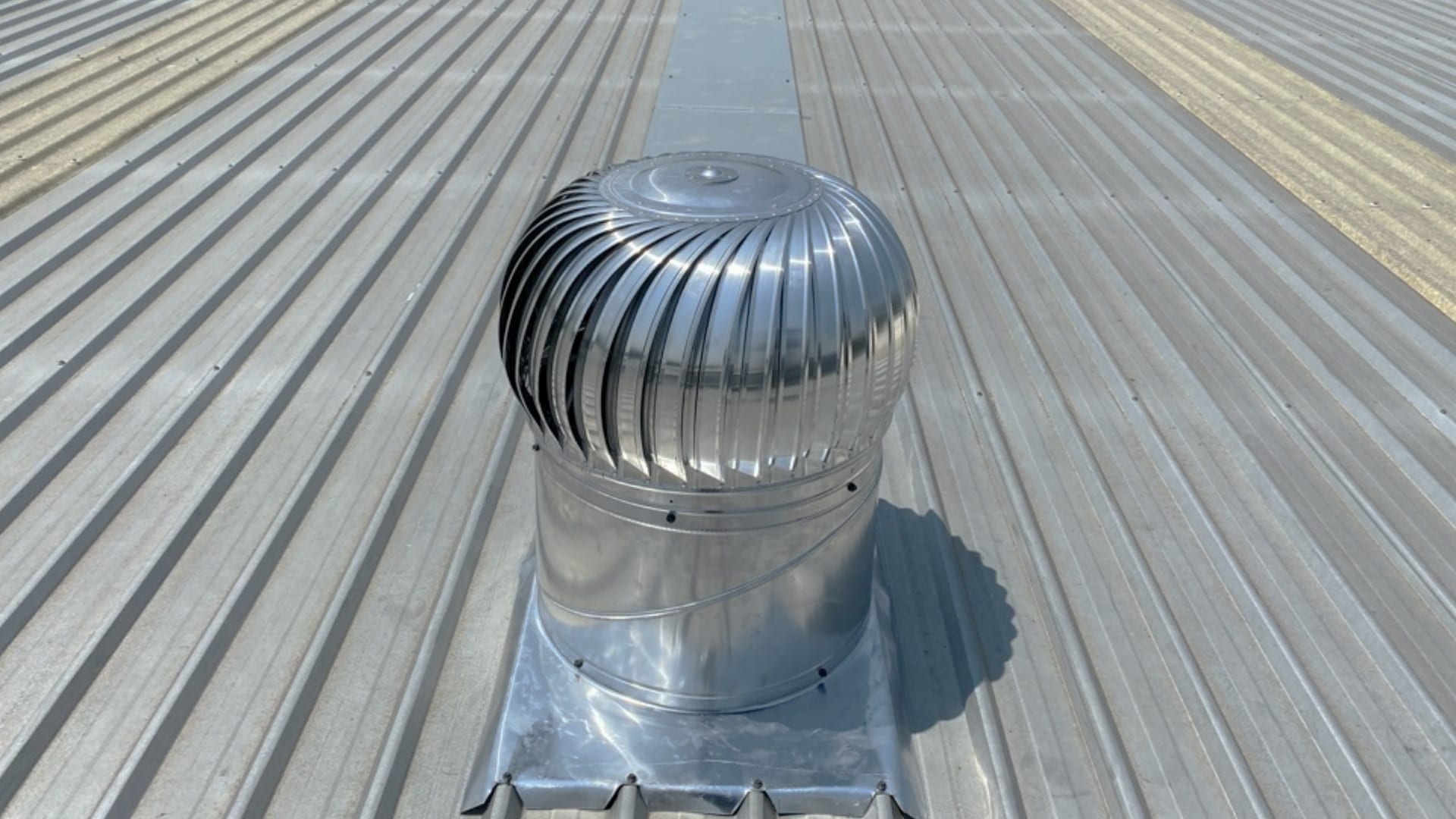Commercial Roof Ventilation – Keep Your Warehouse Cool
Rain Heads Custom Made Shipped Free Australia Wide – Click Here >
Dambuster Rain Heads Shipped Free Australia Wide – Click Here >
Commercial Industrial Roof Vents 300mm-950mm – Click Here >
Eco-Friendly Roofing Insulation Shipped Free – Click Here >
Gutter Sumps Shipped Free Australia Wide – Click Here >
Factory Warehouse Ventilation
In this modern times warehouses tend to carry out a lot of activities. Some of these activities generate a lot of heat and moisture hence require massive cooling. Warehouses during the summers can be faced with a lot of heating challenges contributed to by the harsh climate plus the activities in the warehouses. Warehouses sometimes harbour goods that are fragile to excessive moisture or high temperatures. This may require constant cooling to be applied. Reliance on natural cooling methods alone cannot provide effective cooling required for a warehouse. Failure to cool warehouses can result in spoilage of goods, fires caused by high temperatures and combustion, and the reaction of the chemicals stored and the environmental heat.
Warehouses are usually located in warm regions like Australia where it requires massive cooling during summers and sometimes a very good ventilation system during the winters to handle the massive amount of moisture that may be in the warehouses. Cooling is not about proper roofing and opening; it is all about the installation of the cooling systems like roof ventilation whirlybirds, whirlybird roof vents, and whirlybird vents.

Natural ventilation through the use of whirlybird
Whirlybirds can also be considered as a natural means of ventilation since it is dependent on the wind to blow the fans and turbines within hence regulating the internal environment of the warehouse. It is able to improve both the quality and quantity of airflow within the warehouse. The use of a whirlybird is both cost-effective and durable.This gives users or warehouses a more comfortable time to be able to enjoy the vicinity. The use of a whirlybird ensures the energy costs are minimized. The whirlybirds are not affected by adverse climates; hence can last long without necessary replacement. Whirlybirds give the place a natural essence and ambiance to keep the warehouse ore stable and cool during various weather conditions.
The use of roof ventilation whirlybirds relies on air from the environment hence eliminate the operations costs like electricity cost that can be necessary for the rotation of the whirlybirds turbines and fans. This can be termed as operation free costs of using the whirlybirds. Whirlybirds are preferred due to the fact that they have no environmental effects. They are greener means of energy and temperature regulation; hence should be used more commonly compared to the other means of energy regulation. Due to its economical and environmentally friendly nature, the use of whirlybirds is effective for application for industrial purposes i.e., the use in the warehouses.

Natural ventilation versus the use of whirlybirds
Despite the fact that natural ventilation is a cost-free method of it presents a lot of challenges to the warehouse. Compared to the use of whirlybirds, whirlybirds can sometimes be a little bit expensive to install but, in the long run, they are very cheap to maintain and eliminate the challenges that can be experienced as a result of natural means of ventilation. Some of the challenges of using natural ventilation include:
Difficulty in controlling air regulation. Maintenance of room temperatures can be sometimes be a challenge since the natural ventilation compared to whirlybirds do not suck warm air out of the warehouse. The natural ventilation just allows inflow and outflow of air. The whirlybird is hence more effective compared to natural ventilation. Natural always means cannot eliminate the need for air conditioning and the need to have whirlybirds. The use of natural forces is effective too in ventilation and maintains the interior warehouse suitable for workers.
In order for the natural ventilation to operate effectively, the building must be structured according to the flow of winds. This is to ensure that the wind flows in the same direction and therefore making the structure more durable. The entire building orientation must be in alignment with the wind flow. Whirlybirds work as long as there is wind blowing and must not depend on the direction of the flow of wind.
Build up condensation; natural ventilation is not effective for sucking air at the topmost part of the warehouse and hence may lead to a lot of buildup of condensation at the rooftop of the warehouse. The use of whirlybirds is effective for sucking the top warm air.

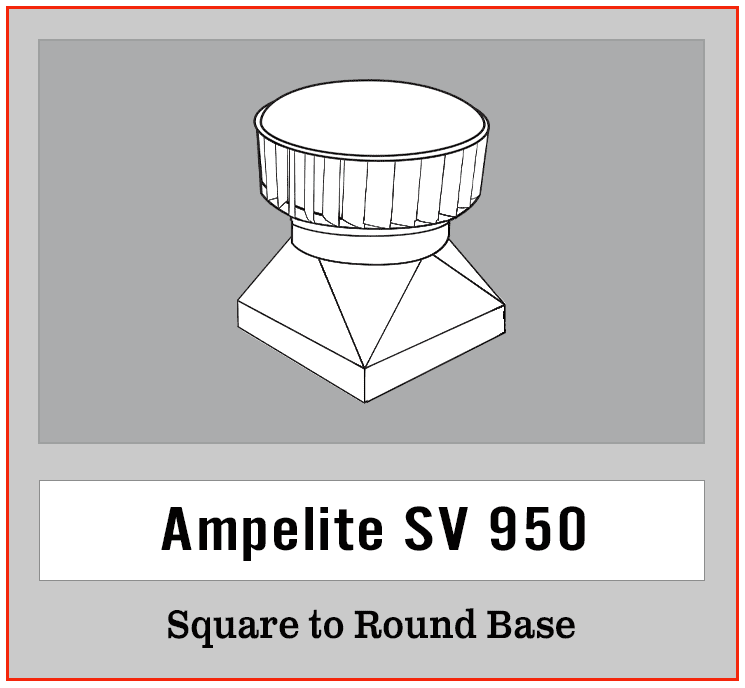
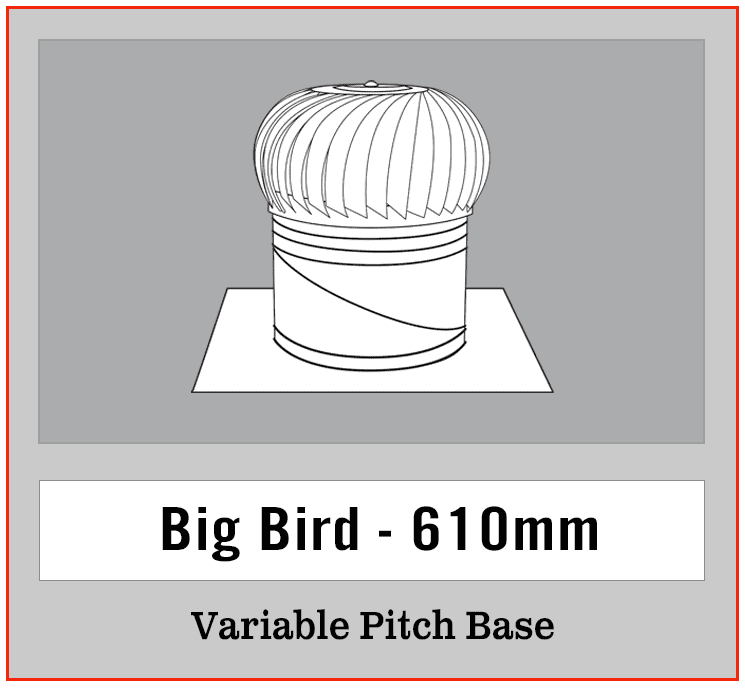
Whirlybirds
Over millennium’s whirlybirds and whirly roof, vents have been applied in warehouses. The whirlybirds are effective for the removal of heat from the warehouses during the summers hence helping in the reduction of the cooling costs. The whirlybird is a wind-driven ventilator designed to exhaust heat and moisture and heat from the roof space of a warehouse. It works without the use of electric energy. The fact that it’s made up of aluminum makes it lightweight and easy to operate. Roof ventilation Whirlybirds can also be installed in cyclone-prone regions like Australia.
Whirlybirds can either be mechanical i.e., active power and a conventional whirlybird, which is wind-driven. The wind-driven depends on the wind to rotate; that’s when the wind hits the fins, causing the vents to operate.

Advantages of whirlybirds
Whirlybirds can be combined with other ventilation systems to increase the efficiency and reducing running costs hence making them cost-effective for use and cooling warehouses.
Convenience and affordability. Whirlybirds are cheap and also have got little or no running cost hence cost-effective for use in roof ventilation for the warehouses.
Whirlybirds normally have limited inputs and are easy to fit. They normally require little maintenance. They can just be installed and left alone.
Whirlybirds are resistant to rain. This extends the life of the original roof and also minimizes roof replacements.
Disadvantages of whirlybirds
Sometimes whirlybirds depend on wind for them to be able to rotate. This is disadvantageous in occasions where the wind is not sufficient to enable the whirlybird to propel. This makes the whirlybird essentially useless when wind airflow is absent. This normally happens in dry summers when there is no wind to enable the whirlybird spin. Electrical, mechanical whirlybird can be considered if it were not for its high price and increase in the cost of operation.
Whirlybirds cannot be switched off in the winter season, which does result in warehouses losing a lot of heat.
Whirlybirds are normally noisy, especially when the amount of wind is strong in a certain period.
Roof ventilation whirlybirds open design makes them prone to dust, foreign objects, leaves, and debris. This normally causes functional defects.
Whirlybirds vents do normally rust and get damaged by unfavorable weather conditions hence not very reliable for use in warehousing.
Whirlybirds vents normally attract operational costs such as cleaning and lubrication, which adds on to their costs of maintenance.
Whirlybirds Roof vents are normally inefficient as compared to other modern types of ventilation since several whirlybirds need to be installed to be able to recycle large enough amount of air for cooling in the warehouses. A warehouse will normally require at least 40 whirlybirds to effectively cool the warehouse; this is quite costly and normally makes the warehouse unattractive.

Types of ventilation
Natural ventilation
Natural ventilation refers to ventilation in a warehouse such as windows, doors, trickle ventilators, wind towers, and solar chimneys. Natural forces such as wind drive air through these ventilation in order to cool the warehouse. This type of ventilation normally depends on human behavior, design of the building, and climatic conditions.
Mechanical ventilation
Mechanical ventilation is propelled by mechanical fans. On most occasions, they are installed directly in windows, walls, or in air ducts in order to supply air into the warehouses to bring out cooling effects.
A balanced mechanical ventilation system is normally preferred for warehousing roof vents. In balanced mechanical ventilation, the positive and negative pressure is normally tested and adjusted to meet the warehousing design specification. The warehouse pressure may be maintained at either slightly negative or positive pressure achieved by using unequal supply or exhaust ventilation rate.
Climate is the main determinant of the type of mechanical ventilation need to be installed. In cold climates, negative pressure ventilation is normally used, and extra filtration avoided in order to reduce interstitial condensation. On the other hand, positive pressure mechanical ventilation is used, and infiltration use minimized in warm and humid climates in order to reduce interstitial condensation.

Hybrid or Mixed-mode ventilation
Hybrid ventilation combines both natural and mechanical ventilation in order to provide an effective cooling system of the warehouse. The mechanical ventilation is normally installed as a backup to the natural ventilation to cool the warehouse effectively. This type of ventilation is normally disadvantageous since it normally requires a lot of care and also testing before use. Furthermore, the fans need to be installed where the warehouse can directly exhaust the air to the outdoor environment.
Exhaust fans pose some challenges such as large fans installation difficulties, high-power fan noise, unbalanced warehousing temperatures, and unlimited electricity supply.
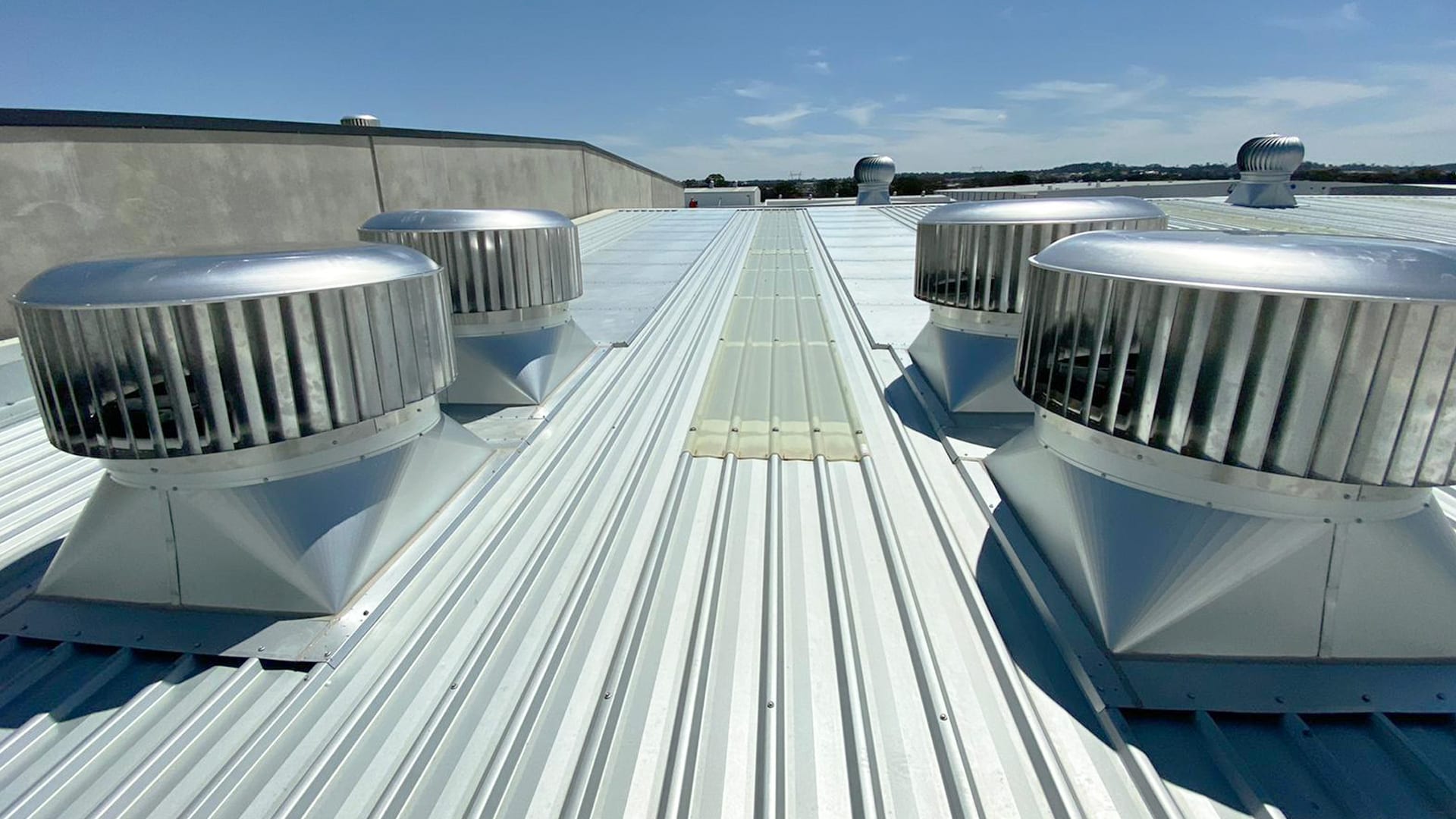
Assessing the performance of the ventilation system
The performance of the ventilation system can be assessed from four basic aspects as highlighted below
Adequacy of whirlybird roof vents ventilation rate
The origin of airflow (clean or polluted environments)
Efficiency of the whirlybird vents in delivering outdoor air to each section of the warehouse.
The efficiency of the roof ventilation in getting rid of air pollutants from the warehouse.
Advantages of warehousing ventilation
Proper ventilation enhances the performance of whirlybirds’ roof vents since they do not have to propel for long hours. This also makes the whirlybirds roof vents to last longer.
Well placed ventilation prevent trapped moisture, which can cause damage to the warehoused goods.
Proper ventilation extends the life of the roof and minimizes roof replacements.
Ventilation helps in ensuring that temperatures in the warehouse are evenly distributed, which saves the whirlybirds roof vents from propelling every time.
Proper ventilation preserves warehousing insulation from the dripping of trapped vapor, which can damage the warehousing roof.
It makes warehouses more eco friendly. This is essential for ensuring that the warehousing conforms to occupational health and safety standards. Excellent ventilation makes the building safe and comfortable for the workers in the warehouse.
Proper ventilation makes public warehouses easier to sell. People intending to make storage in public warehouses would prefer warehouses fitted with whirlybirds roof vents and having proper ventilation. This also may attract buyers who intend to purchase warehouses for self-maintenance.
Disadvantages of warehousing ventilation
Expenses. The cost of installing and maintaining the roof vents, windows, and warehousing fans is quite expensive.
Intrusion. Whirlybirds Roof vents normally attract foreign objects such as insects, small animals such as rodents into the warehouse. These are normally destructive and may be costly to the organization since it leads to damage to valuable goods stored in the warehouse. Criminals and other intruders can break into the warehouse and steal the goods by breaking the windows.
Increase in indoor ozone. An increase in ventilation rate increases the indoor concentration of the outdoor pollutants, which is a major source of the indoor ozone, which increases warehouse exposure. Higher concentrations of outdoor ozone lead to respiratory and other health complications.
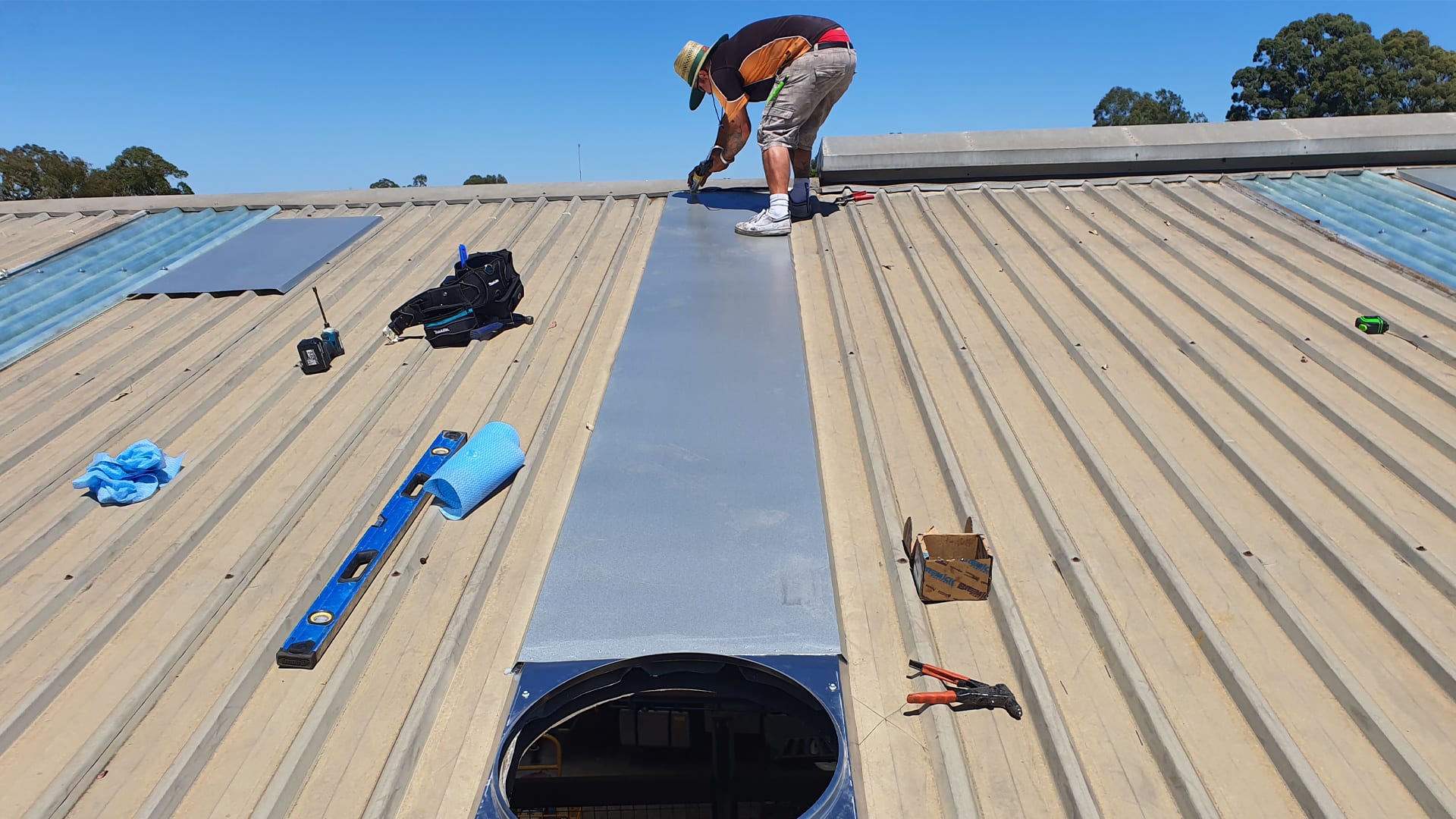
Damages in warehouses for lack of Whirlybirds
There a lot of damages that may occur in a warehouse in case whirlybirds are not installed. The damages can be very extensive and can lead to financial losses. Some of the damages include molds that grow in the warehouse, structural damages that can occur on the building structures like destruction in the woods that are used to build the warehouse. Moisture can also cause damages in the warehouse insulation and cause rusting in the cooling pipes and boiler equipment. Other damages can be damages pertaining to the employees’ health and working conditions. Proper ventilation will help minimize the occurrence of an environment that can reduce the occurrence of the germs’ habitable environment.
In order to resolve this damages or prevent their occurrence, a warehouse should extensively use ventilation equipment like whirlybirds, roof ventilation whirlybirds. The entire warehouse will benefit from the utilization of whirlybirds i.e., the temperatures will extensively be regulated, and the warehouse will become a conducive environment to operate.
Benefits of roof ventilation whirlybirds
Cheap and easy to install
Whirlybirds do not require the use of electric energy to operate. Instead, they are dependent on the wind to rotate effectively and suck air from the warehouse.
Reliant on airflow
In case of a lack of wind, the turbines don’t rotate well. On a windy day, the whirlybirds work effectively and maximum hence reducing the temperatures to the required limit. Whirlybirds do not work effectively in regions like a valley.
Control impurities
The air inside the warehouse can contain more pollution compared to the air outside. This is due to the number of activities that are ongoing in the warehouse. Some of the activities ongoing in the warehouse can produce a lot of chemical reaction which may produce the impurities. The number of dust particles in the warehouse can also be high due to other activities in the warehouse, which may also be another source of impurities. The role of whirlybird vents and whirlybird roof vent is to ensure the impurities in the air are sucked along with the warm air that floats at the top level of the warehouse. A good whirlybird vent will ensure the number of pollutants in the warehouse is effectively expelled out, making the warehouse suitable for hospitality.
Air regulation
Ventilation is a means of controlling the airflow within the warehouse. Good ventilation will make sure a good inflow and outflow of air within the warehouse.
Minimize condensation
Roof ventilation whirlybirds will eliminate moisture in the warehouse. A damp environment can cause spoilage of goods. Respiratory challenges for the employees are working in the warehouse. Effectively operation whirlybirds will ensure maximum elimination of moisture to avoid condensation within the room.
Cooling
An alternative to refrigeration is roof ventilation whirlybirds. Through the elimination of moist air, warm air, and impurities, whirlybirds will eventually result in controlled temperatures within a warehouse. The whirlybird regulates the temperatures in the room to provide a more suitable environment for the storage of goods.
Health benefits
Whirlybird eliminates all the moisture, impurity, and warm air in the warehouse. Through this, whirlybirds ensure there are employees who do not suffer from moisture-related diseases like skin diseases and asthmatic infections. All these diseases can be avoided through good ventilation and the utilization of whirlybirds in the warehouse.
Energy efficiency
The usage of whirlybirds ensures the amount of capital spent on energy regulation is reduced. The whirlybirds depend on wind to operate hence reducing the amount of energy that could be used on electricity to be used when regulating the warehouse temperatures or regulation of internal temperatures i.e., the use of air conditioners and fans, which may also occupy a lot of space in the warehouse.
Environment-friendly
The use of whirlybirds is a means of energy conservation, plus the fact that they don’t pollute the environment makes them effective for application for warehouses, which may require massive cooling systems. The use of whirlybirds will ensure the amount of energy that relied on the organization for cooling is massively reduced. The use of a whirlybird will eliminate any possible use of petroleum or diesel-powered generators to operate. It is hence advisable for large scale use in the warehouses.
For warehouses based in Australia with varied climatic conditions i.e., adverse summers, the use of whirlybirds is the means of ventilation to be utilized. The use of whirlybirds is cost-efficient and is environmentally friendly. Its application can not only be restricted to warehouses but also in homes.
